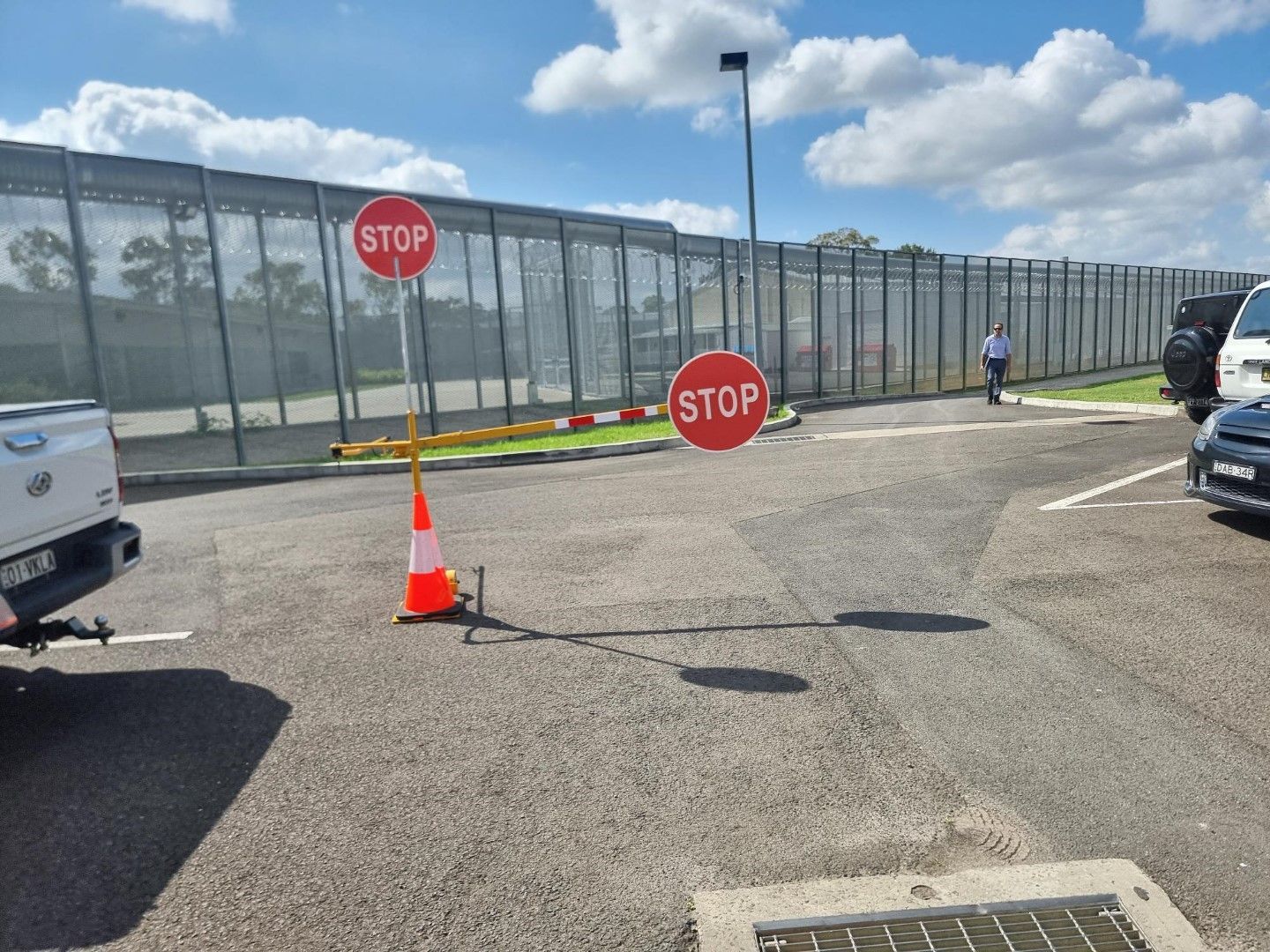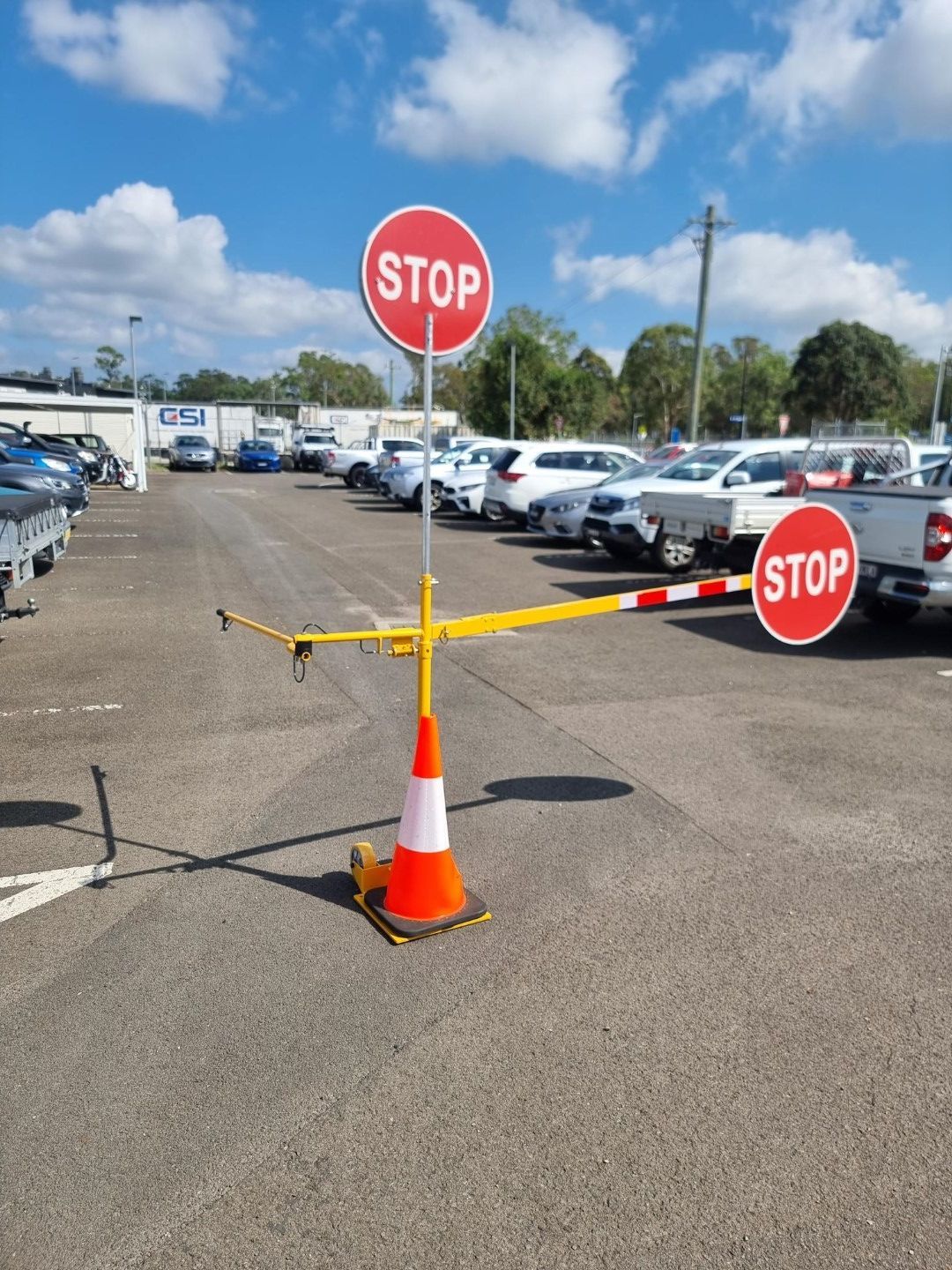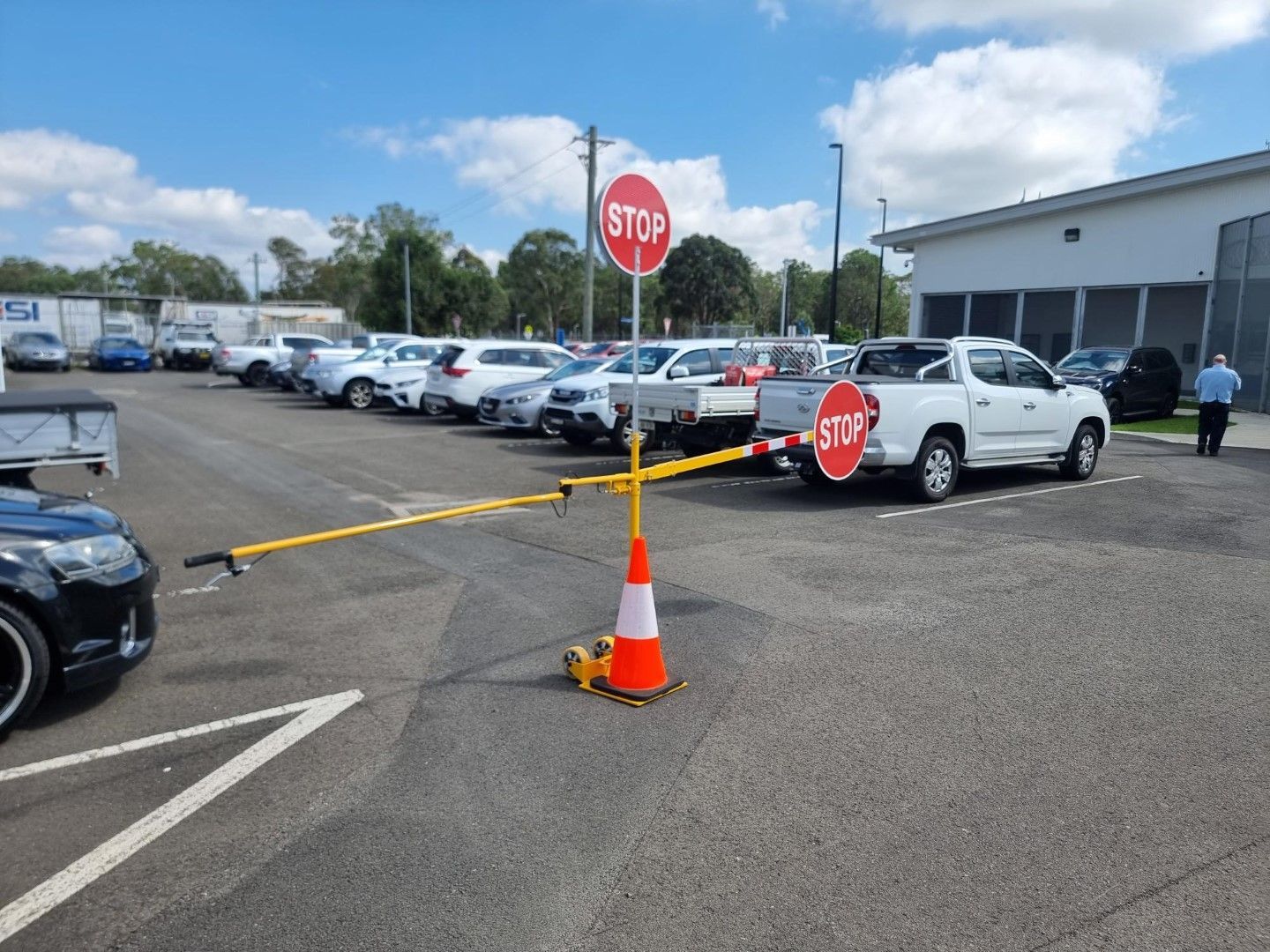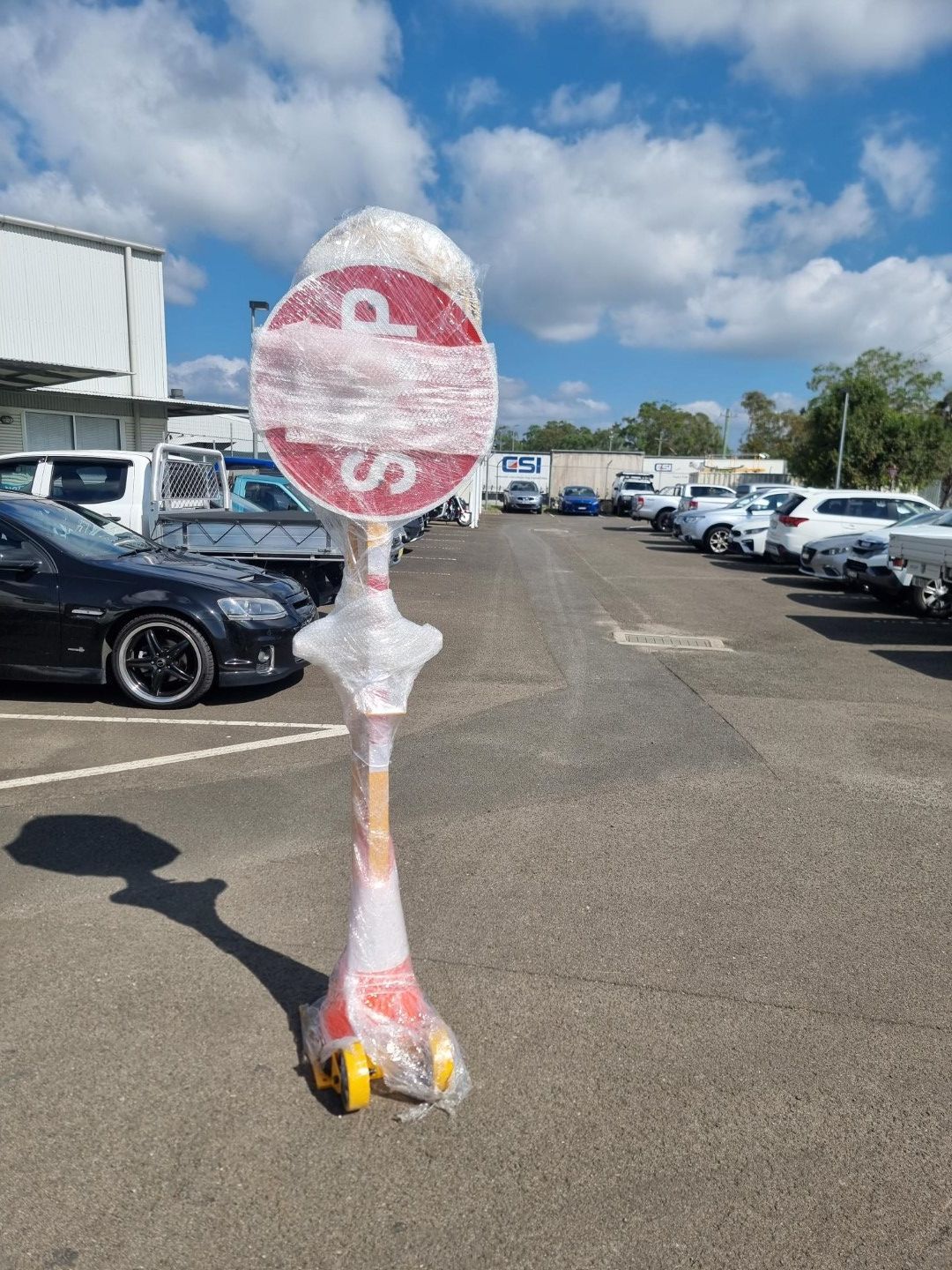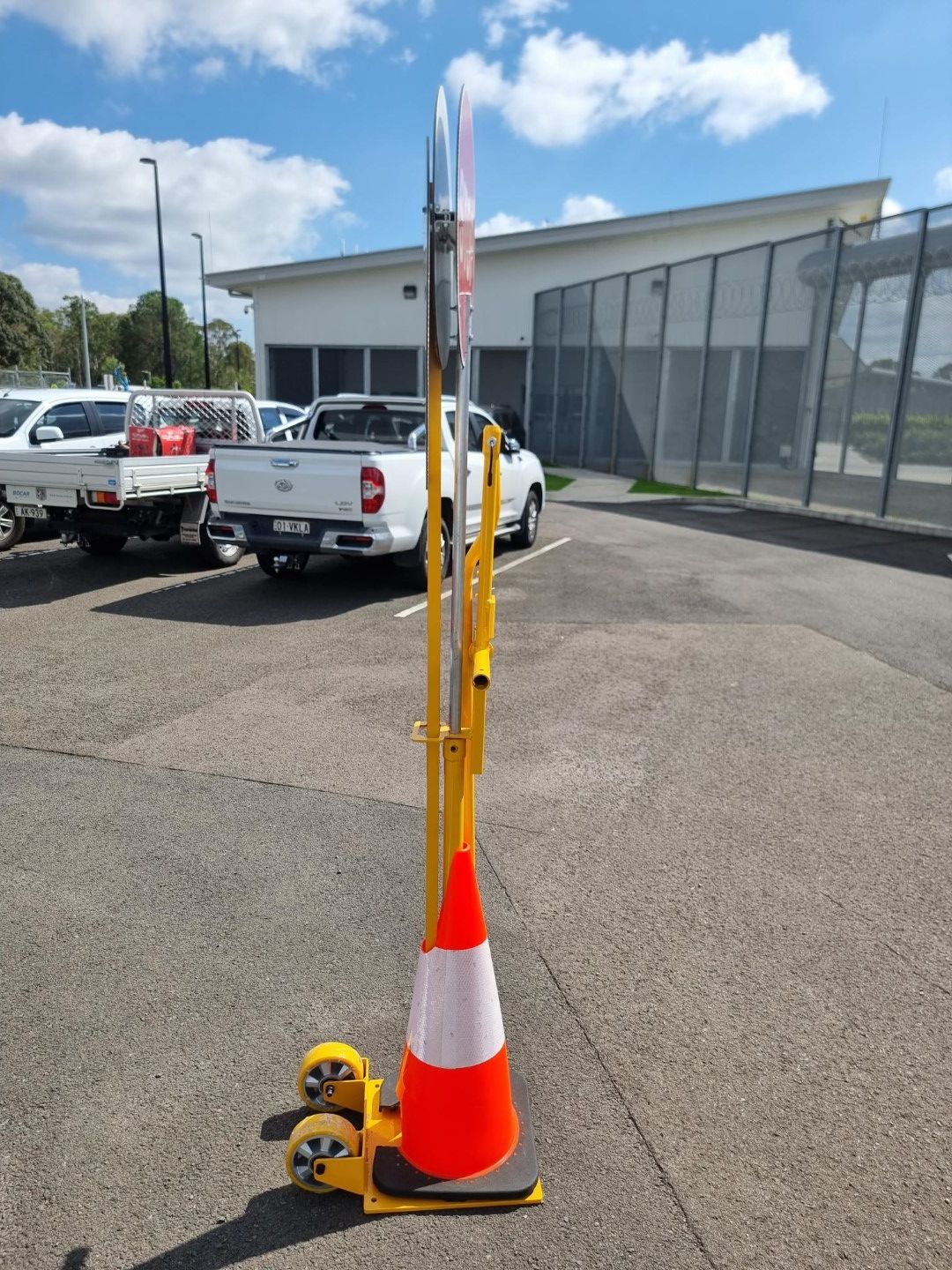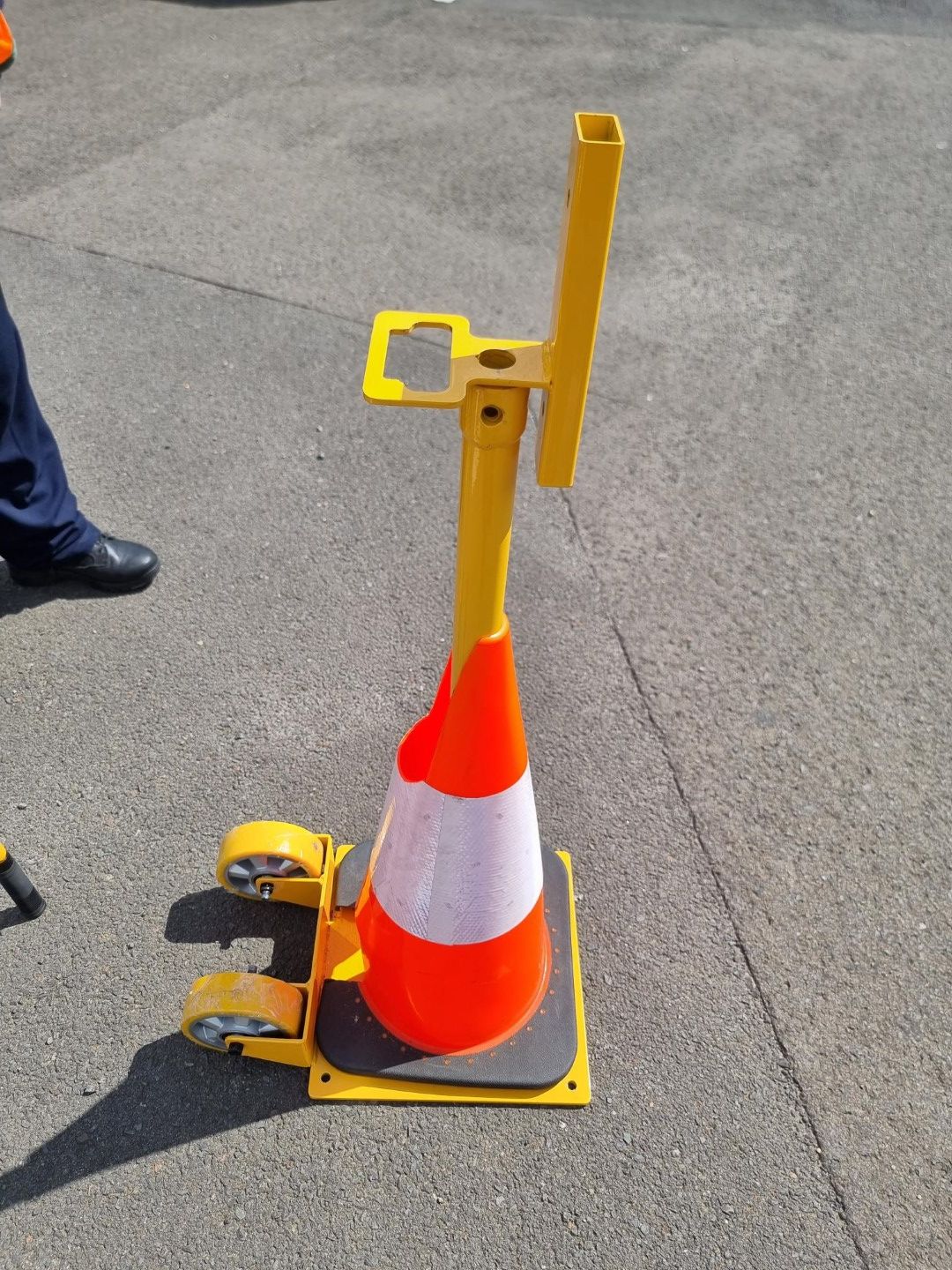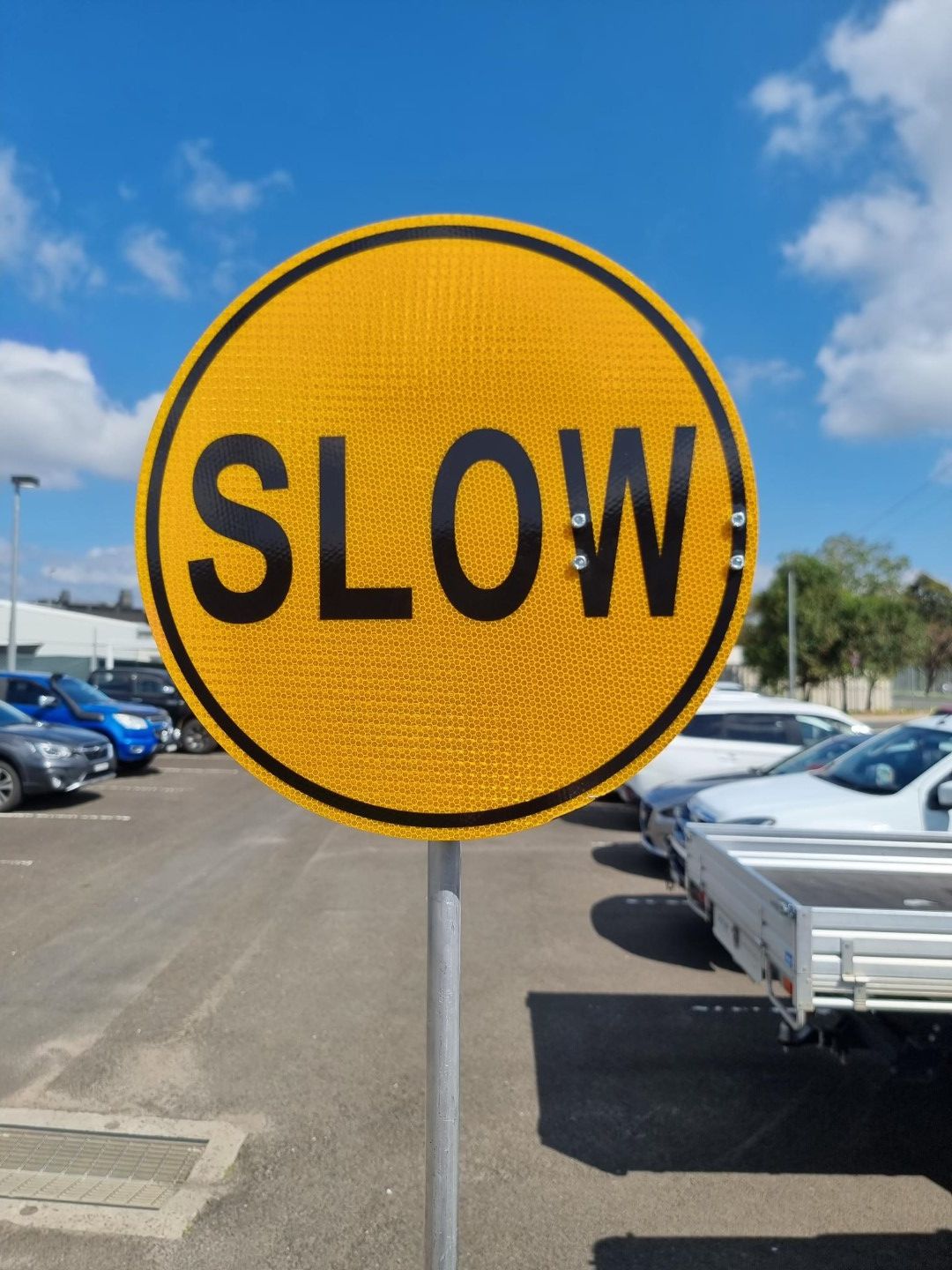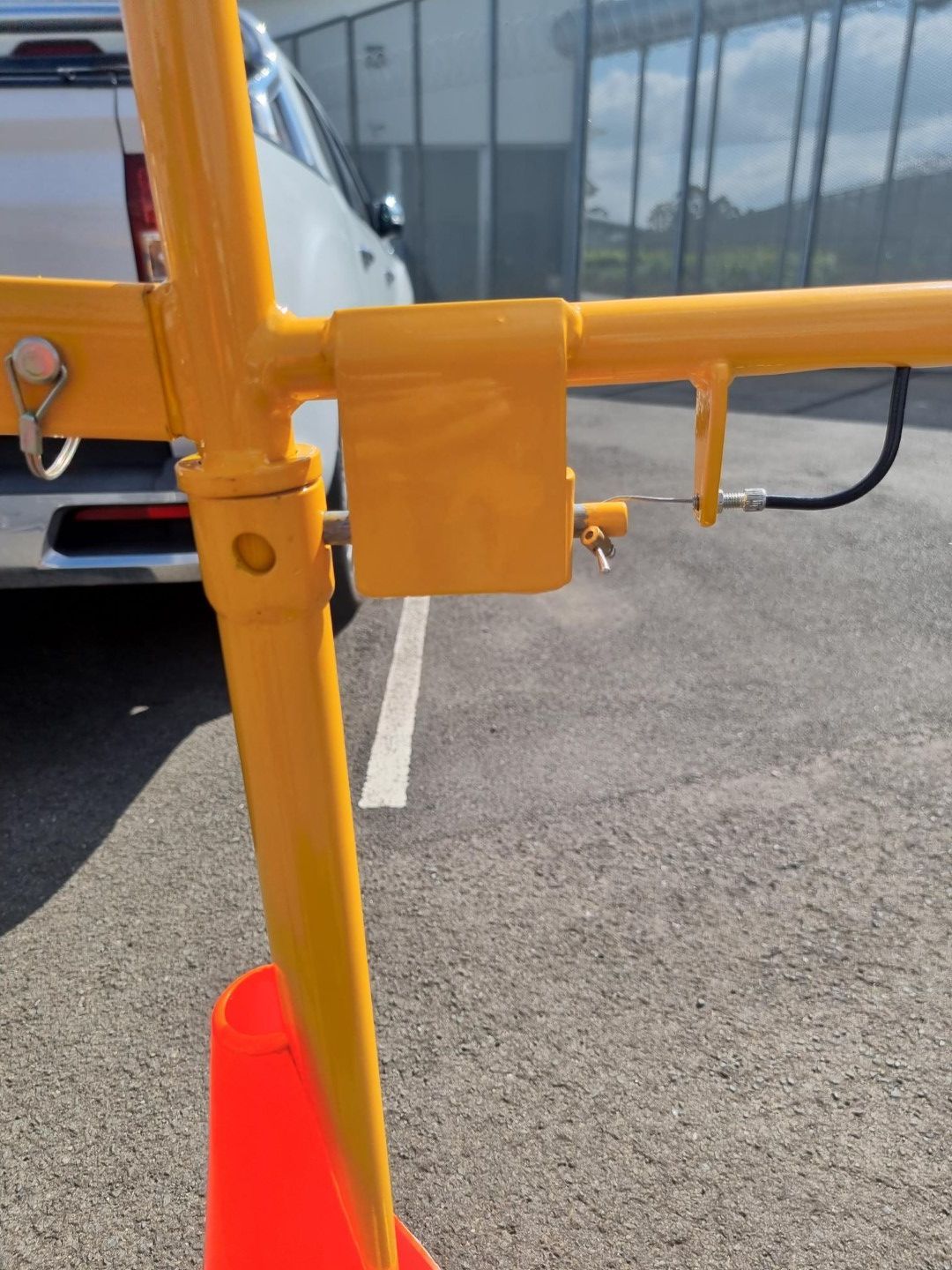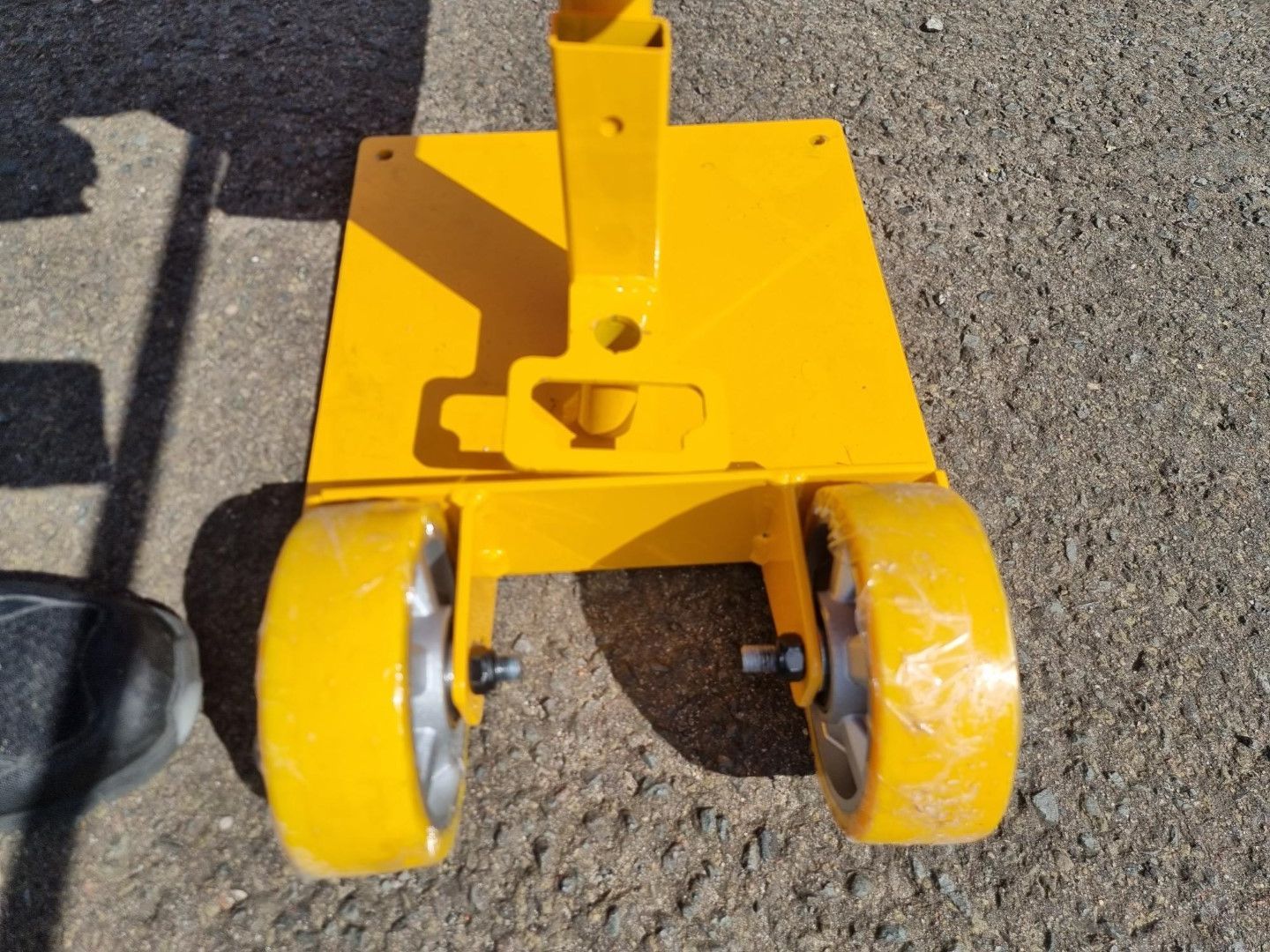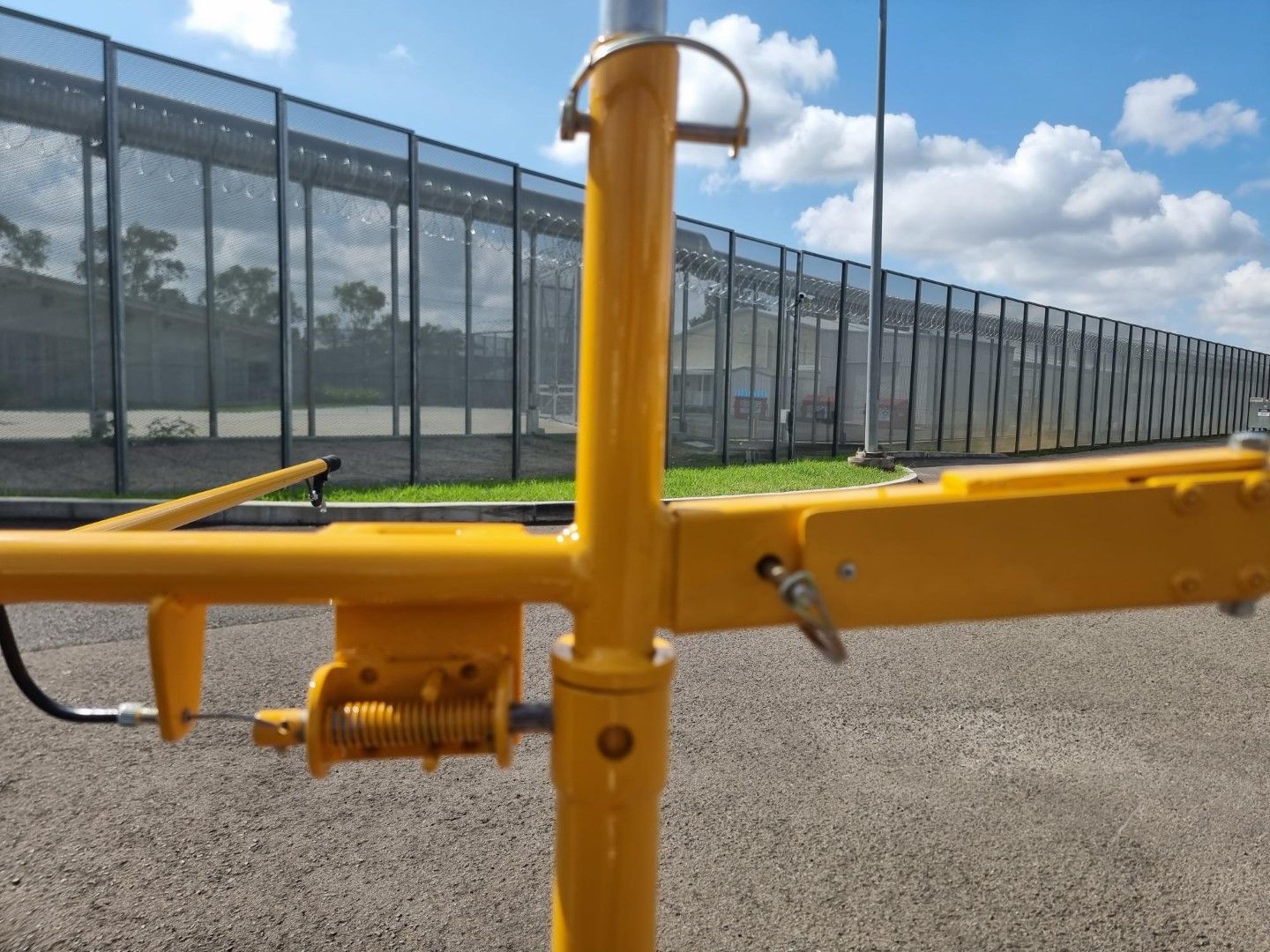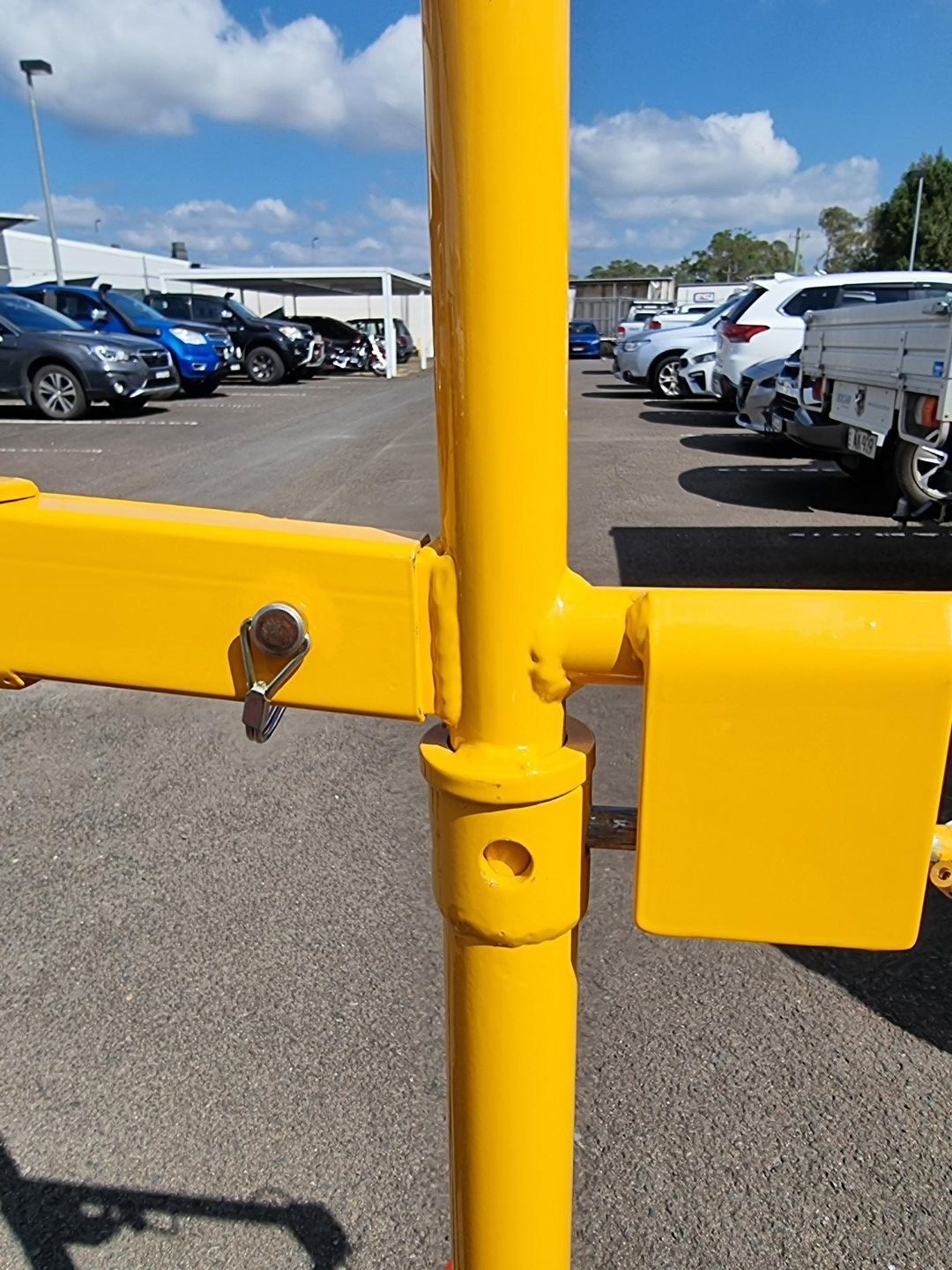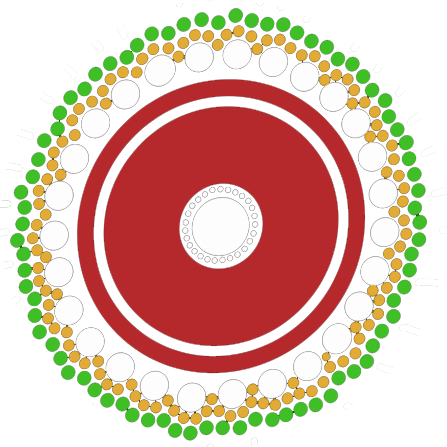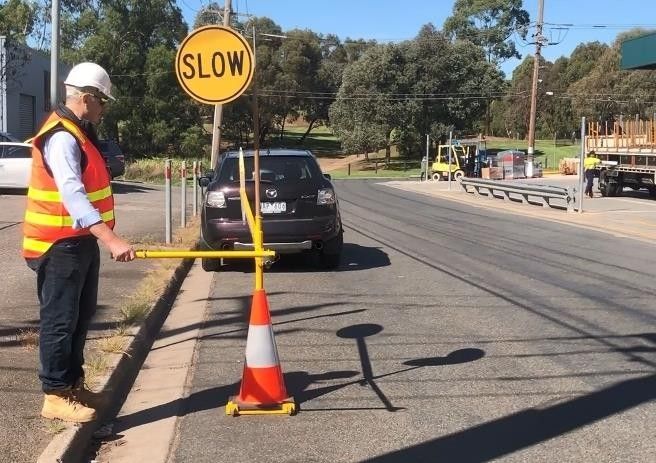Gibney Barriers
The Gibney Barrier
In 2023, Blackroo stands as an innovative company committed to manufacturing road safety solutions that not only save lives but also contribute positively to society. One of their flagship products is the "Gibney Barrier," named after a renowned road safety advocate who championed the cause of protecting stop and go operators on the roads.
Produced under licence to Fulton Hogan The Gibney Barrier is designed to provide a safe working environment for stop and go operators, also known as traffic controllers, who manage traffic flow during roadworks, construction, or other events. It creates a protective barrier between the workers and moving traffic, reducing the risk of accidents and potential harm. This portable barrier system is easy to deploy and maneuver, making it a versatile solution for ensuring the safety of these essential roadworkers.
What sets Blackroo apart from other manufacturers is their commitment to social impact and sustainability. They've partnered with Indigenous prisons to manufacture the Gibney Barrier, providing skills training and employment opportunities to incarcerated individuals. This initiative serves a dual purpose: it equips prisoners with marketable skills, reducing the likelihood of reincarceration, and at the same time, produces a vital road safety product.
There are many benefits to supporting Blackroo in the production of these Gibney Barriers:
Enhanced Road Safety:
The primary benefit of Fulton Hogans Gibney Barrier lies in its ability to significantly enhance road safety for stop and go operators at temporary traffic stops. By deploying the Gibney Barrier, the traffic operator is safely removed from the immediate proximity of passing vehicles, with a distance of 1.5 meters established between them and the traffic flow. This physical separation greatly reduces the risk of accidents and potential harm to the operator, ensuring a safer working environment.
Lives Saved:
The Gibney Barrier's effectiveness in creating a safe zone around stop and go operators translates into lives saved on the road. Traffic controllers are often exposed to oncoming traffic, making them vulnerable to accidents and injuries. By providing a physical barrier, the Gibney Barrier significantly minimizes the chances of incidents, ultimately contributing to a reduction in road accidents and fatalities.
Quick and Easy Deployment:
Fulton Hogan benefits from the Gibney Barrier's portability and ease of deployment. The barrier system is designed to be user-friendly, allowing for quick setup and removal at various worksites. This efficiency not only enhances productivity but also ensures that workers can focus on their tasks without undue delay, resulting in smoother traffic flow and improved project timelines.
Durable and High-Quality Manufacturing:
Blackroo's commitment to quality ensures that the Gibney Barriers are manufactured to the highest standards. The barriers are constructed using durable materials that withstand the rigors of outdoor conditions, providing long-lasting protection for traffic operators and optimal value for Fulton Hogan's investment.
Social Impact and Reintegration:
The partnership between Blackroo and Indigenous prisons has far-reaching benefits. By involving incarcerated individuals in the manufacturing process, the initiative provides them with valuable skills and training. These skills not only contribute to producing a critical road safety product but also empower inmates to gain meaningful vocational experience, potentially leading to improved employment prospects upon release.
Reduced Reincarceration Rates:
Skills training and employment opportunities play a crucial role in reducing reincarceration rates among released inmates. Through the Gibney Barrier manufacturing program, Blackroo offers a pathway for prisoners to develop marketable skills and build self-esteem. By acquiring new abilities and work experience, former inmates are better equipped to reintegrate into society and pursue constructive paths, ultimately reducing the likelihood of reoffending.
Indigenous Community Support:
Fulton Hogan's association with Blackroo's initiative demonstrates a commitment to supporting Indigenous communities. The partnership fosters positive engagement with the Indigenous population, creating economic opportunities and promoting cultural understanding. As a result, Fulton Hogan can contribute to broader social development while simultaneously meeting its road safety needs.
Ethical and Responsible Sourcing:
By procuring the Gibney Barrier from Blackroo's Indigenous prison manufacturing program, Fulton Hogan demonstrates a commitment to ethical sourcing and corporate social responsibility. Such initiatives align with modern consumers' values, fostering a positive brand image for the company and enhancing stakeholder trust.
The barriers significantly enhance road safety for stop and go operators, reducing accidents and fatalities. Furthermore, the partnership with Indigenous prisons provides inmates with skills and training, aiding in their rehabilitation and lowering reincarceration rates. This joint effort reflects a commitment to safety, social impact, and ethical business practices, positioning both companies as leaders in their respective industries.
Generation 4 Gibney Barrier: What’s NEW
- Spring bolt mechanism upgraded
- Hand brake mechanism changed to sturdier model with sheathing installed for external section of line
- The control arm that comes of the central pivot cut back to improve packing for transport
- The diameter of wheels on base increased and wheels relocated to assist ease of movement
- The Stop/Slow sign stick changed to aluminium and the locking mechanism upgraded
- Boom arm changed to aluminium to lower unit weight
- Centre of gravity of unit closer to centre pivot to aid in handling
- Pins on chains upgraded Stopper attached to the control arm knuckle to stop it going full circle
Purpose:
The Gibney STOP/SLOW Barrier Arm has been designed and manufactured to:
- As an Alternative option to the industry standard STOP/SLOW bat.
- Position the traffic controller (TC) a minimum 1.2m from edge line, edge of seal or through lane.
- Provide a positive barrier to eliminate road user drive off and drive through on the “STOP” sign.
- Make it difficult for road users to fit between the end of the barrier arm and the last cone on the centreline threshold.
- Position the oversized “STOP” sign which is mounted on the barrier arm, mid lane, is much more visible to approaching road users than the TC holding a sign on the left hand side shoulder of the road.
- Duplicate the STOP sign to the left of the barrier, reinforcing signal and assisting following traffic in spotting both the sign and operator.
- Ensure that the TC operator cannot operate the Gibney from anywhere other than the left hand shoulder of the road, thus increasing operator safety, keeping TCs out of live lanes.
- Be easy to transport to site as it can be dismantled into relatively light weight components to fit in a ute to transport on the site.
- Be easy to install and use with a minimum of operator training.
- Be more visible for road users, as the oversize “STOP” sign and the barrier arm are directly in the drivers’ line of vision.
- Be easy to operate with a handbrake locking system and built in STOP/SLOW bat for intermittent works
The Gibney Barrier Certification
The Australian Roads Research Board - Transport Infrastructure Product Evaluation Scheme (TIPES) is a process aimed at providing an independent fit-for-purpose assessment of innovative road construction products.
TIPES is intended for the evaluation products that fall outside the scope of established standards and specifications.
TIPES is a national scheme endorsed by all Australian State and Territory road agencies as well as IPWEA (QLD), the Queensland Local Roads Alliance and WALGA.
Technical Evaluation
A technical evaluation of the original and Australian model of the device has been conducted in accordance with the TIPES Guide for Applicants and Terms and Conditions (2020 edition).

Statement of TIPES Opinion
The opinion of the TIPES Product Evaluation Panel (PEP) is that The Australian model of the Gibney Barrier is an effective TCD, to be used at roadworks sites
in Australia in lieu of ‘STOP/SLOW’ bats or portable traffic signals.
The Applicant’s claim that the Australian model of the device reduces the risk of such works for TCs is recognised, supported, and has been successfully demonstrated.

